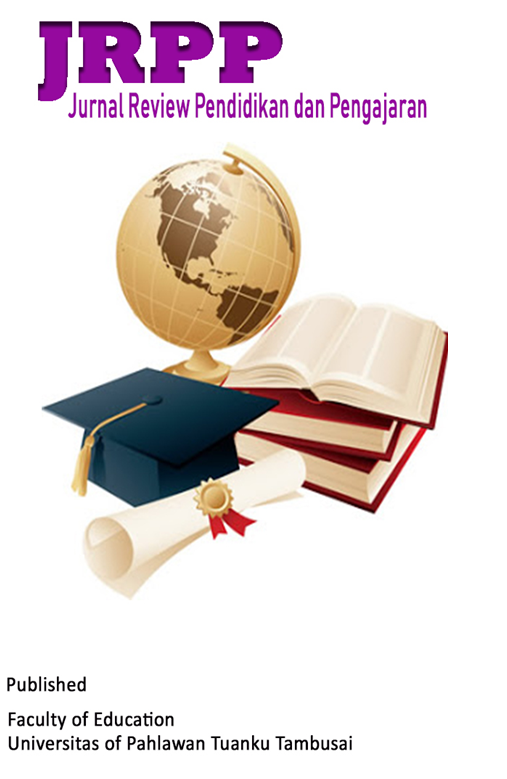ANALYZING TEXTUAL MEANING IN MAUDY AYUNDA'S G20 SPEECH AT PRESS CONFERENCE ON THE INTRODUCTION OF THE GOVERNMENT SPOKESPERSON: A SYSTEMIC FUNCTIONAL APPROACH FOR ELT MATERIALS
DOI:
https://doi.org/10.31004/cdj.v5i4.31421Keywords:
Textual Meaning Analysis, Theme and Rheme, Systemic Functional GrammarAbstract
In the current era of globalization, the ability to speak English is becoming increasingly important in various fields, including politics, diplomacy, and education. This investigation uses the Len's systematic functionally method to try to explain the theme and rheme of Maudy Ayunda's spoken work. Through the analysis of themes and rhemes in political and diplomatic speeches, this study aims to make a significant contribution to teaching English, especially by enriching teaching materials related to political and diplomatic speeches. Descriptive text employing Michael Halliday's SFL viewpoint technique is the study methodology employed. The speech given by Maudy Ayunda at a press conference regarding the appointment of the government spokesperson for Indonesia's G20 presidency serves as the study material. Through the analysis of themes and rhemes in speech sentences, this research assists students in understanding the structure and meaning of texts as well as improving their ability to understand, analyze, and respond to the texts effectively. The results of this investigation can be utilized for developing English teaching materials that facilitate understanding the meaning and context of texts. By understanding the use of themes and rhemes in political speeches, students can improve their ability to comprehend better, analyze, and respond to such texts. In teaching English, understanding themes and rhemes in political and diplomatic speeches holds significant value. Analyzing themes and rhemes helps students grasp the structure and meaning of texts, thereby enriching English language teaching materials related to the register of political and diplomatic speech.References
Ahmadi, M. R., et al. (2019). "Analysis of Teaching Materials: A Systemic Functional Linguistic Approach." English Language Teaching, 12(9), 135-144.
Asemah, E. S., Nwaoboli, E. P., & Nwoko, Q. T. (2022). Textual analysis of select social media hate speech messages against clergymen in Nigeria. GVU Journal of Management and Social Sciences, 7(2), 1-14.
Astari, D. A. M. J., Padmadewi, N. N., & Dewi, N. L. P. E. S. (2022). The Critical Discourse Analysis of Maudy Ayundas Speech at Press Conference on the Introduction of the Government Spokesperson for Indonesia's G20 Presidency. Linguistic, English Education and Art (LEEA) Journal, 6(1), 140-152.
Banks, D. (2017). A systemic functional grammar of French. Taylor & Francis.
Devi, S., & Thaba, A. Strategi Direktif Maudy Ayunda dalam Perkenalan Juru Bicara Presidensi G20 Indonesia: Tinjauan Linguistik Sistemik Fungsional. Kode: Jurnal Bahasa, 11(3).
Firdaus, E. A. (2013). Textual meaning in song lyrics. Passage, 1(1), 99-106.
Halliday, M. A. K. (1985). "An Introduction to Functional Grammar." London: Edward Arnold.
Matthiessen, C. M., & Halliday, M. A. K. (2009). Systemic functional grammar: A first step into the theory.
Swales, J. (1988). Discourse communities, genres and English as an international language. World Englishes, 7(2), 211-220.
Umiyati, M. (2019). Textual Metafunction in Donald Trumps Speech Recognizing Jerusalem as Israels Capital. International Journal of Systemic Functional Linguistics, 2(2), 55-60.
Youtube: https://www.youtube.com/live/TCaa4UWhUM0?si=ViykOReutylPcVXS
Downloads
Published
How to Cite
Issue
Section
License
Copyright (c) 2024 Alya Aqila Putri, Hilmansyah Saefullah, Kelik Wachyudi

This work is licensed under a Creative Commons Attribution-ShareAlike 4.0 International License.















